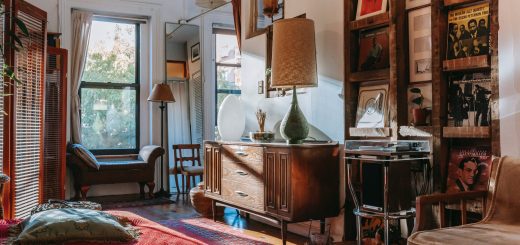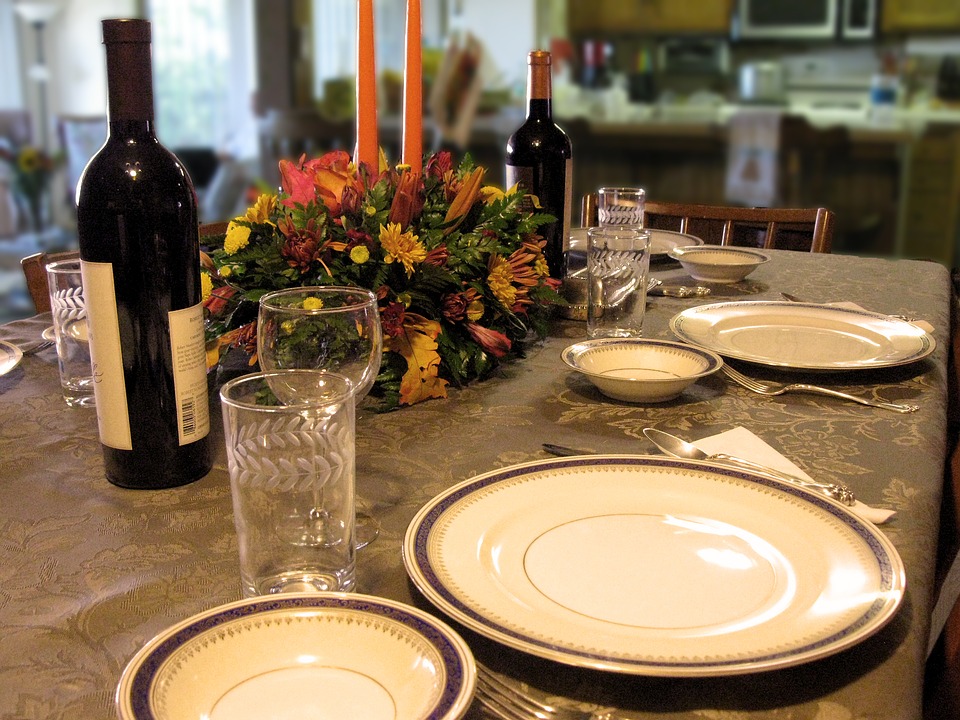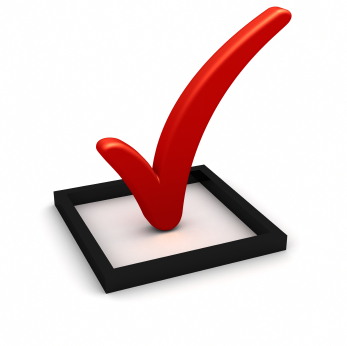Tips for Using Your Fireplace Safely
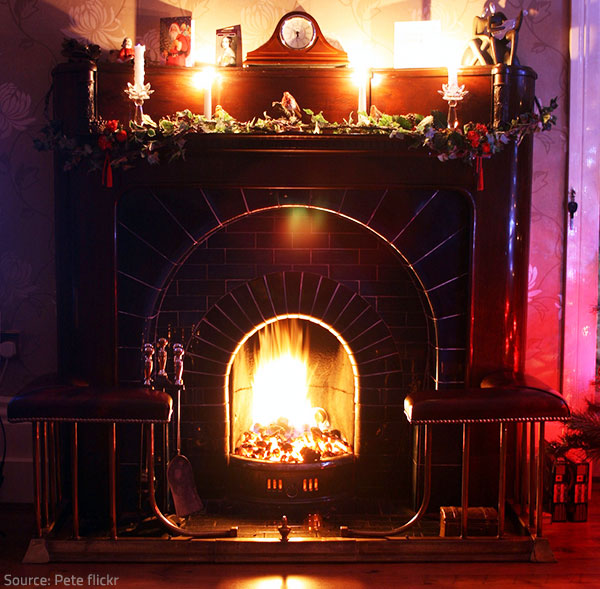
“The weather outside is frightful, but the fire is so delightful…”
No matter how heavy the snowfall or how severe the blizzards, you will certainly find plenty of beauty and joy in the winter season – especially when curled up in front of a crackling fireplace. And indeed, there are few things more delightful than the cozy warmth of a fire on a cold winter day or night when the entire world seems to be in the grip of eternal frost and ice.
But as fascinating as the blazing flames may be, you should not forget that they can also pose serious hazards to you and your family’s safety. According to the statistics, fireplace accidents account for 42% of all home-heating fires and emergency room visits every year. So, to be able to enjoy the crackling warmth of a roaring fire in the cold winter months without any risk of property damage and personal injuries, you need to know how to safely use your fireplace and the precautions to take before lighting the fire.
Make Sure Your Fireplace Is Safe to Use
Fireplace safety is a matter of proper maintenanceMaintenance is the routine care, inspection, and repair of a... More and cautious use.
Step 1. Ensure the best condition of the chimney and fireplace
1) Have your chimney and fireplace professionally inspected at least once a year. Make sure:
- The flue damper opens, closes, and seals properly
- There are no cracks or loose bricks on the chimney or fireplace
- The mortar and bricks on the chimney aren’t crumbling or missing
- The roof flashing is tight against the chimney and shows no signs of damage
- The chimney is not leaning to one side or the other
- There are no tree branches, bird nests, or other debris above or near the chimney
- The cap that covers the top of the chimney and keeps rain, debris, and animals from entering is not damaged or missing
Do not forget to have the chimney liners examined for cracking or deterioration as well.
2) Have your chimney and fireplace cleaned by a certified chimney sweep before the winter.
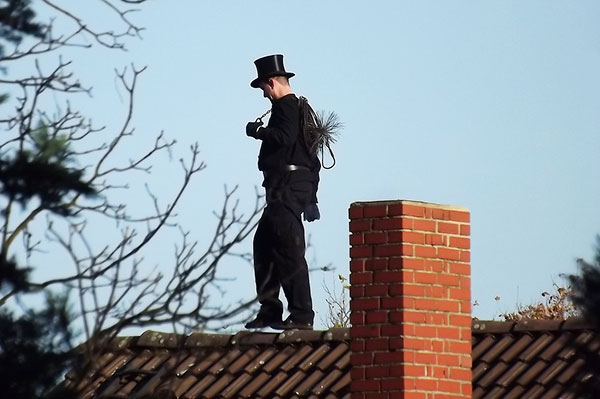
A chimney sweep will not only bring you good luck, but will also ensure the fire safety of your home.
Keep in mind that if the flue or chimney is blocked by debris, inadequate venting can occur and toxic fumes may seep into your home. What’s more, sootSoot is fine black particles composed of carbon and other ma... More and creosote (a byproduct of burning wood) may build up on the chimney and cause a fire. Therefore, you are strongly recommended to have your chimney and fireplace professionally cleaned before the beginning of the wood-burning season.
A qualified chimney sweep will use a special brush to remove all the sootSoot is fine black particles composed of carbon and other ma... More and debris from the fireplace and the chimney as well as clean the flue, smoke chamber, smoke shelf, and firebox in a quick and efficient manner. Once the process is completed (it should not take more than an hour) the chimney sweep will carry out a smoke test to ensure that everything has been properly cleaned and your fireplace is safe and ready to use.
Step 2. Reduce potential risks
1) Burn only dry seasoned wood or specially designed fire logs in your fireplace to reduce the risk of a fire. Wood that has not been seasoned or properly dried sizzles and creates excess smoke that promotes sootSoot is fine black particles composed of carbon and other ma... More and creosote buildup (both substances are highly flammable and can easily result in a fire).
The best woods to use are hardwood logs from broad-leafed deciduous trees, such as hickory, oak, maple, ash, beech, and birch. Softwood logs from needle- and cone-bearing trees should only be used for tinder and kindling as they burn too rapidly and contribute to creosote build-up.
If you prefer manufactured logs over real wood, have in mind that they burn hotter and can potentially warp metal chimneys if you burn more than one log at a time. Make sure to strictly follow the directions on the bag when using artificial fire logs.
Crates, lumber, painted wood, or other treated wood should not be burned in a fireplace as it releases chemicals that can compromise the air quality in your home. Burning plastic products also results in toxic emissions that should be avoided at all costs.
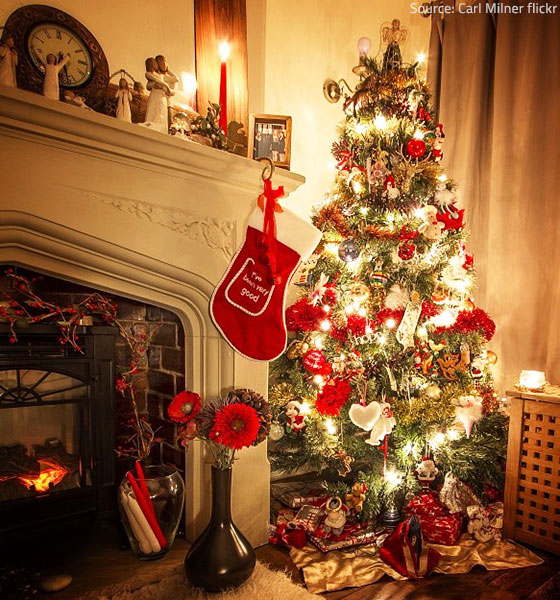
Can you spot any potential fire hazards?
In addition, burning charcoal is not a good solutionA solution is a homogeneous mixture of two or more substance... More as it can leadLead is a heavy metal that can be toxic to humans, especiall... More to carbon monoxide poisoning.
2) Install a spark guard to keep embers contained within the fireplace. Use a mesh metal screen or glass fireplace doors to prevent sparks and/or embers from shooting out of the firebox and setting a nearby item on fire.
3) Keep any flammable materials (including the Christmas tree and holiday decorations) at least 3 feet away from the fireplace.
4) Keep the fireplace mantel clear of hanging items and/or decorations. Unless any decorations that hang down from the mantel (such as Christmas stockings, garlands, etc.) have been removed before lighting the fireplace, they may accidentally catch fire when the flames grow and sparks start flying.
5) Keep a nonflammable rug in front of the fireplace, so that sparks don’t damage your carpeting.
Build a Safe Fire
- Open the flue before lighting a fire to ensure the fireplace will vent properly. Keep it open until the fire is completely extinguished (closing it too soon can allow poisonous gasses to build up in your home). However, do not forget to close the damper when the fireplace is not in use – this will prevent warm air from escaping through the chimney.
- Place logs at the rear of the fireplace on a metal grate (Stacking the logs as far as possible to the back of the fireplace will help ensure sparks and embers don’t get out of the firebox).
- Use some crumpled paper and a bit of kindling (no thicker than your thumb) to start a small fire. Be careful not to use too much paper as an excessive amount can over-build the fire and ignite sootSoot is fine black particles composed of carbon and other ma... More in the chimney, causing a fire.
- Use a match or commercial firelighter to start the fire. Never use gasoline, charcoal lighter fluid or other fuel to light your fireplace.
- Add a single log and tend to the kindling to keep it burning until the log catches fire. Keep the damper completely open to increase draw in this early stage. Add more logs gradually, as the fireplace heats.
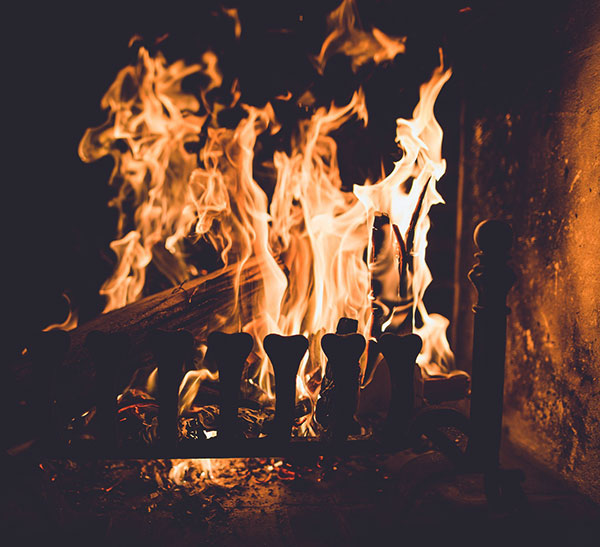
Make sure your fire is burning bright and safe!
- Be careful not to overload the fireplace. As beautiful as a roaring fire may be, it’s much more dangerous than a controlled burn. A fire that’s too large or too hot can even crack the chimney, not to mention that small fires generate less smoke and less creosote buildup.
- If your fireplace has glass doors, keep them slightly open while the fire is burning to allow sufficient air circulation (necessary for complete combustion) and help reduce creosote build-up in the chimney.
- Make sure the metal mesh screen is tightly closed to keep embers and rolling logs in the fireplace.
- Open a window to allow fresh air intake when you light a fire. This will provide enough oxygenOxygen is a chemical element essential for combustion and li... More for the fire to burn efficiently and will also help balance air pressure to keep your chimney drafting well.
- Let the ashes cool fully before removing them – add some water to ensure no hidden embers can spark a new flame; leave them in the fireplace until the following morning if you’ve enjoyed a fire the night before, etc. Consider leaving some ash in the fireplace to provide bedding for the embers and help your next fire start quickly and easily.
Fireplace Safety Tips
To prevent fire damage to your home and ensure the safety and well-being of your loved ones you need to adhere to some simple, yet crucial rules when using a wood burning fireplace:
- Never leave a fire unattended! Make sure the fire is fully extinguished before leaving the house or going to bed
- Do not allow children or pets to get too close to the fireplace
- Never burn cardboard (glues and printing inks can release toxins when burned), trash or debris in your fireplace;
- Keepin mind that ash and embers can remain hot for long after the fire has been extinguished, so they should never be put directly into a trash can. Use a shovel to scoop the ashes in a covered metal container and keep it at least 10 feet away from your home and any other buildings. Even when you remove old embers and ash, make sure you place them into a metal container and don’t mix them with other trash
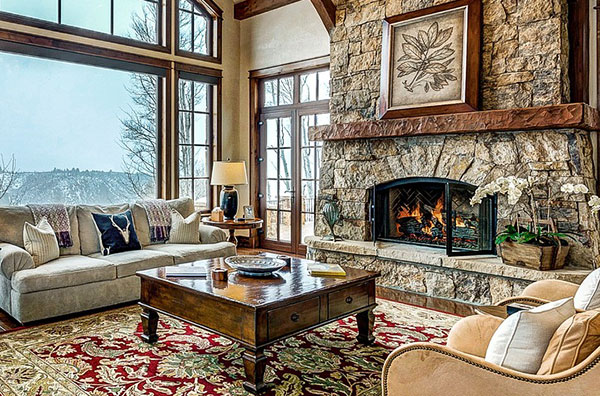
You’ve followed all the recommendable fireplace safety tips? All that is left now is to enjoy the cozy warmth of your safe fire.
- Use specialized fireplace tools (a brush, a poker, a shovel, and tongs) when tending to the fire and make sure your fireplace is properly equipped with a sturdy grate and a screen. Consider getting a log carrier and an ash can as well
- Clean the firebox at least once a week during the cold months
- Install a chimney cap with a mesh screen spark arrester to help prevent burning embers or sparks from escaping and creating a fire hazard
- Install smoke detectors (to detect smoke from a fire and signal an alarm that will allow you enough time to get you and your family to safety) and carbon monoxide detectors (to alert you to the buildup of this dangerous odorless and colorless gas) at every level of your home. Make sure you test the detectors monthly and change the batteries whenever necessary
- Keep a fire extinguisher in the room where your fireplace is located
- Avoid using your fireplace at the same time as other appliances that vent to the outside (such as clothes dryers, central vacuum systems, bathroom vents, kitchen range hoods, etc.) to reduce the risk of carbon monoxide buildup. (Running too many appliances that vent to the outside at once overtaxes the venting system which may result in carbon monoxide being trapped in the home.)
- Store firewood at least 30 feet away from your house.
Should you ever experience a house or building fire, be sure to call a fire and smoke damage restoration service for emergency cleaning.
However, knowing how to safely use a wood burning fireplace will not only considerably reduce the risk of fire accidents, but will also help you prevent fire and smoke damage to your home. Fire safety is in your hands – make sure you do your part and prevent tragedies from happening.










